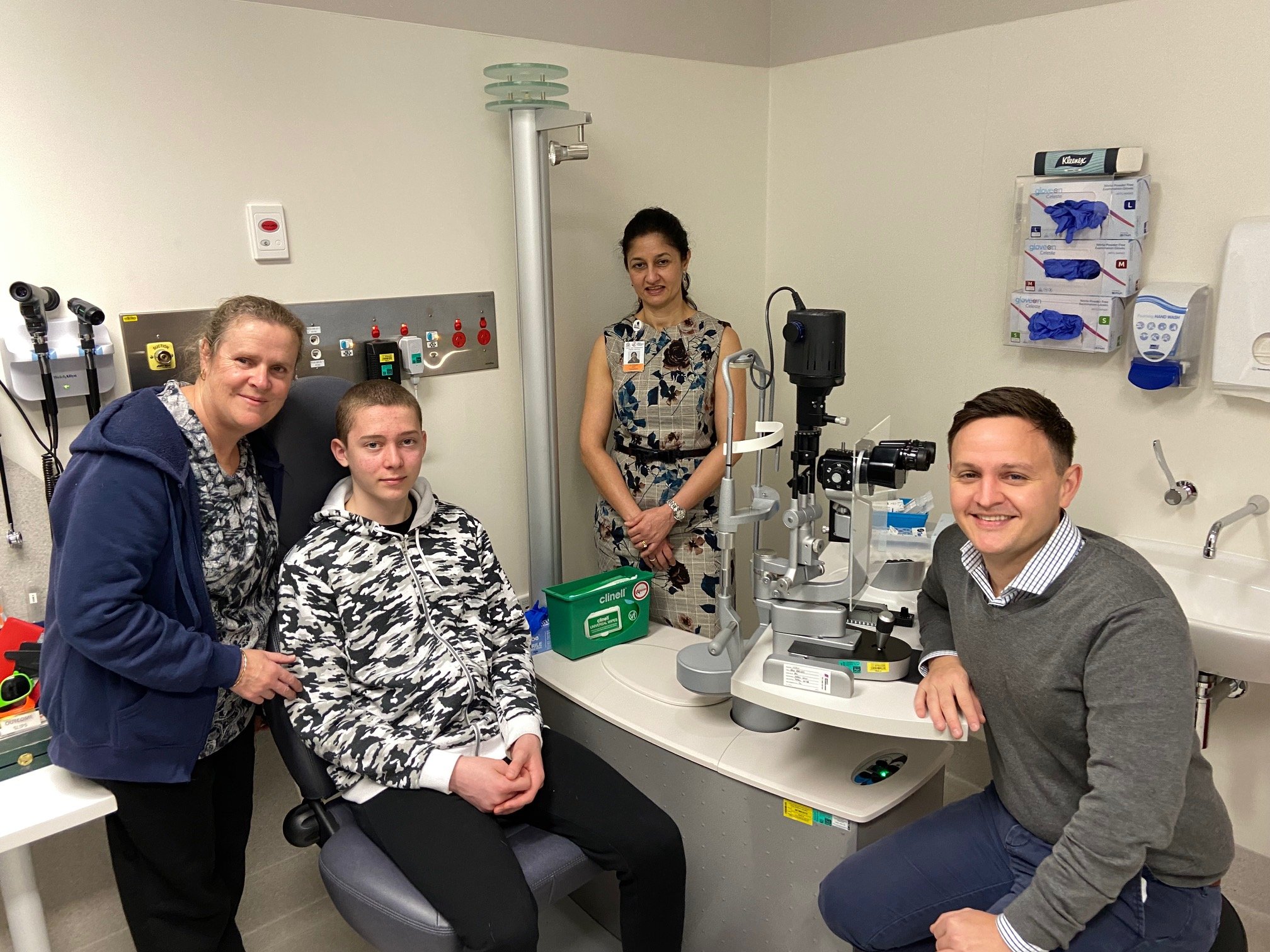There's a new children’s clinic to revolutionise diabetic eye treatment here in WA. 
The clinic is a collaboration between the Lions Eye Institute and Perth Children’s Hospital, and is part of the new Perron Paediatric Retinopathy Initiative, generously supported by the Stan Perron Charitable Foundation.
The initiative includes a new clinic, based at the Lions Eye Institute in Nedlands, and a research project that will help screen, assess and treat children for diabetic retinopathy complications.
Blake, who was recently diagnosed with type 1 diabetes, is among those who will benefit from the new clinic. Blake's mum Toni also welcomes the new clinic particularly given she is vision impaired.
"Any research that helps better understand a condition and prevent vision impairement is worthwhile," she said.
Professor Elizabeth Davis, Head of the Department of Endocrinology and Diabetes at PCH and co-director of the Children's Diabetes Centre said type 1 and type 2 diabetes were amongst the most common causes of severe and irreversible vision loss in Australian children.
“Australia has a relatively high rate of type 1 diabetes, and on average seven new cases are diagnosed every day."
"Type 1 diabetes is most commonly diagnosed in 10-14 year olds, with a rate in this age group that is 3.6 times higher than in people aged over 25.
Diabetic retinopathy occurs when small blood vessels inside the retina, at the back of the eye, become damaged as a result of diabetes, impacting sight and often causing blindness.
Associate Professor Balaratnasingam said vision loss due to diabetes had profound physical, psychological and social consequences in children and young people.
“When you consider that almost 100 per cent of children with type 1 diabetes will develop diabetic retinopathy in their lifetime, this is a very serious issue for these young people and their families,” he said.
“Screening children at regular intervals will enable us to detect the onset of complications at the earliest stages, prior to the occurrence of irreversible structural and functional injury.”
“Detecting the earliest changes to the retinal circulation due to diabetic retinopathy is the key to avoiding irreversible vision loss in children. Understanding changes to the retina through robust screening programs also provides an opportunity to develop better diagnostic techniques and new treatments to prevent disease progression,” Associate Professor Balaratnasingam said.
He said the eye is a window to other parts of the body, and clinicians and researchers intend to use state of the art retinal imaging equipment and techniques to predict kidney and brain complications in diabetes, as well as address gaps in knowledge for conditions such as hypertension, stroke and vasculitis.
*Photo: Toni and Blake Thorp pictured with Dr Kiranjit Joshi (endocrinologist at PCH) and Dr Antony Clark (ophthalmologist from the Lions Eye Institute).
